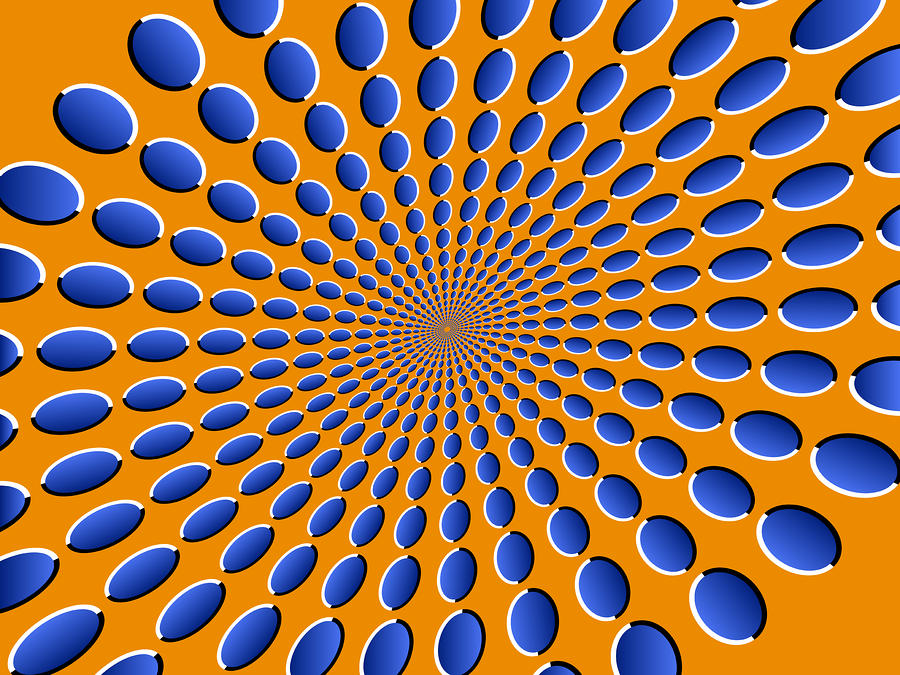Tricks That The Mind Plays, or is The Mind Tricked?
Bet this image looks like it is moving, doesn't it?
NEW DELHI: ‘Nothing is as it seems,’ and believe it or not, that’s a good thing. With your brain being flooded with information, an evolutionary asset is its ability to focus in on the information that matters. Psychologists and scientists refer to this phenomenon as ‘inattentional blindness’ -- a lack of attention that is not associated with vision defects or deficits.
In 1999, Daniel J Simons and Christopher Chabris shared a video based on their research on inattentional blindness. The video shows players wearing white and black t-shirts passing a basketball, and asks the viewer to ‘count how many times the players wearing white pass the ball.’
Go ahead and see if you can keep track of the players in white passing the ball.
Did you count 15 times? And did you see the ----? Chances are you did not. Your brain zeroed in on the relevant information -- the players wearing white -- making you oblivious to that all too apparent image.
The researchers followed up the video with ‘Monkey Business.’ The instructions are the same -- ‘count how many times the players wearing white pass the ball.’
This time, we bet you saw the image. That’s because your brain, now aware that you were previously tricked, was looking out for it. But wait -- did you notice the other details changing, like the ---?
Tricked you again, didn’t we? In fact, the human brain is actually quite inept at noticing big changes, a phenomenon that psychologist and scientists refer to as ‘change blindness.’
Surprised at how obvious the changes were? Try it again, with this video by the Gorilla-famous Daniel Simons.
Here’s another video by Simons. This time it’s silent so that all the talking doesn’t distract you from the visual details.
This ‘change blindness’ is not limited to videos; you experience it in everyday life. Watch this:
‘Change blindness’ however, is just one of the ways you brain is tricked. A 1967 study by Scottish psychologists Harry McGurk and John MacDonald showed volunteers videos of a woman’s mouth forming the shape of the sound “ga” paired with a dubbed sound of “ba.” The study proved that visual inputs strongly affect speech perception, and has been dubbed the ‘McGurk effect.’ The effect is so strong that even if you known about it -- as you do now -- your brain is none the wiser and will continue being tricked. See for yourself.
In 2012, a video of celebrity faces went viral on YouTube. The images used in the video were not altered in any way, but focusing on a central point distorted the facial features of the celebrities we are all very accustomed to seeing. This phenomenon has been dubbed the ‘flash facial distortion effect.’
Tricked you again, didn’t we?





